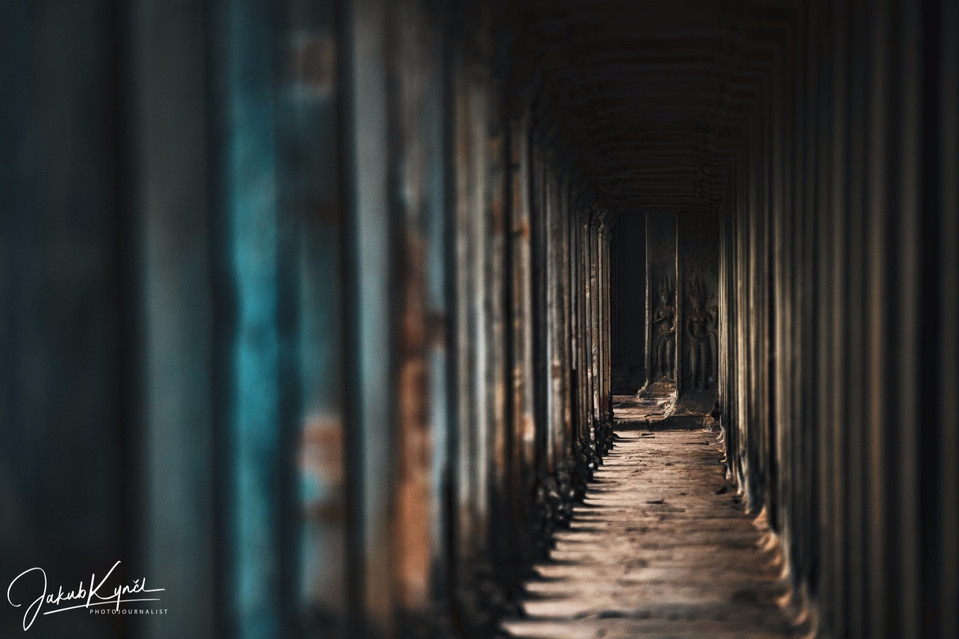How to take PERFECT images of Angkor temples
December 10, 2017First of all, I’m not a huge fan of “how to” articles and blog spots. I’m simply not, but after one week of waking up at 4:30 AM to beat the crowds and getting through more than 20 temples around Siem Reap, I feel like I have a few insider tips that a first-time visitor to the Angkor area might find very useful. I’ve also included a few images I captured there, so you can see whether my advice is actually worth anything to you or not. The temples of Angkor are incredible and you won’t see anything like them in the world. However, trust me, crowds will be the main thing standing between you and a lovely image. Here are a few hints of mine.
1) Wake up early
Yeah, this one should be kind of obvious, right? The majority of temples open their gates officially at 7:30 AM, but sometimes they open at 7:31. On the majority of days, they open between 7:20 and 7:25. At the most famous temples (Ta Prohm, Bayon), wait by the entrance at 7:15 and be prepared to run when the gate opens—if you want crowd-free images, that is. You will have a few minutes to do your work and get your shots, but only a few.
2) Think outside the box
The largest crowd will be watching the sunrise in front of Angkor Wat in the early morning. It’s a smart idea to start your day at a lesser-known temple. At 7:30, there will be NO people of any kind. Use your time in Angkor wisely!
3) Use a photo guide service
Imagine that you have five or seven days to spend in Angkor. Wouldn’t it be nice to know of some interesting hidden gems from your very first day? Small Buddhist temples, side entrances that no one knows about or spots where you can take some wonderful pictures of water reflections? There are a few photo guide services in Siem Reap. Personally, I have used the help of Angkor Travel Photography and would recommend it, especially for beginners and less advanced photographers.
4) Find a reliable tuk-tuk driver ASAP
A lot of people ask whether they should hire a tuk-tuk or an A/C car. Personally, I have enjoyed every single one of my rides in tuk-tuks and honestly don’t think that you need a car with air conditioning. More importantly, you don’t need to be afraid of lens fogging, which could be an issue while in Angkor. You will save a few minutes in terms of the speed of your vehicle, but it isn’t really worth the extra charge. When you arrive at Siem Reap, go around the city a bit and chat to a few tuk-tuk drivers. Try to find one that speaks good English (it is important for them to properly understand what you want, such as the names of specific temples) and find out their price for a half-day/full-day trip. Make sure that water is included. In less than two hours, you should be able to find one that you will be happy with. There are plenty of them around. Talk to them and ask them questions. Don’t be afraid to haggle!
5) Get your ticket in advance
Do you plan to watch the sunrise above Angkor Wat on your first full day in Siem Reap? Great, but buy your ticket one day in advance so you don’t have to wait in a long line in the early morning hours. Sometimes it takes only two minutes, but at other times, usually when you arrive after a large Chinese group, it could take twenty minutes or more. Buy your ticket in the late afternoon on the day before and you’ll pass the checkpoint in the morning like a king. Also, keep in mind that tickets became more expensive in 2017. A daily ticket now costs 37 USD, which seems quite steep, as compared to a weekly pass for only 72 USD.
6) Even policemen can be guides
It may sound strange, but your cheapest and best photo guide might be one of the policemen guarding the place. They spend every single day there, so they know the temples better than anyone else. They know all the angles and sometimes even the best lighting conditions. One policeman offered to show me the best spots at Ta Prohm temple. Honestly, he got me through all the highlights and even showed me two or three spots where I would have been afraid to go alone. We had a nice chat, spent some 30-35 minutes together, and I gave him a 5 USD note for his help. Everybody wins.
7) Golden Hour useful for more than just the light
Try to be in the temples at closing time. Two dollars can often do the trick and you may be able to stay there without ANY other people for 5 or 15 more minutes. I would say it’s “priceless,” but the price is pretty much always two bucks.
8) Leave the Angkor region for a day
It may sound like a strange photo trick to leave the Angkor altogether, but trust me—there are many photogenic temples outside of Angkor with far fewer tourists! In the Beng Mealea temple, I was totally alone for some 40 minutes when I arrived there shortly before 7 AM. The same thing happened in Banteay Srei. There are no opportunities like that in Angkor anymore.
9) Take the right lens with you
The first thing I would recommend to bring with you is an ultra-wide lens. You will surely find some use for a macro lens and a telephoto lens when shooting detailed shots and trying to avoid getting crowds in your pictures. I have used my tripod only 3 or 4 times in Angkor, but I’m usually a tripod shooter. Angkor, unfortunately, really isn’t a tripod-friendly environment most of the time…
10) Don’t waste your lunchtime
Yes, it’s not easy to take perfect images in the very bright sun of midday, but the temples do tend to be a bit less crowded during lunchtime. If you’re aware that some playing with light and shadows can actually get nice results, you’ll be more willing to wait on your lunch until 2 PM when the crowds tend to return.





